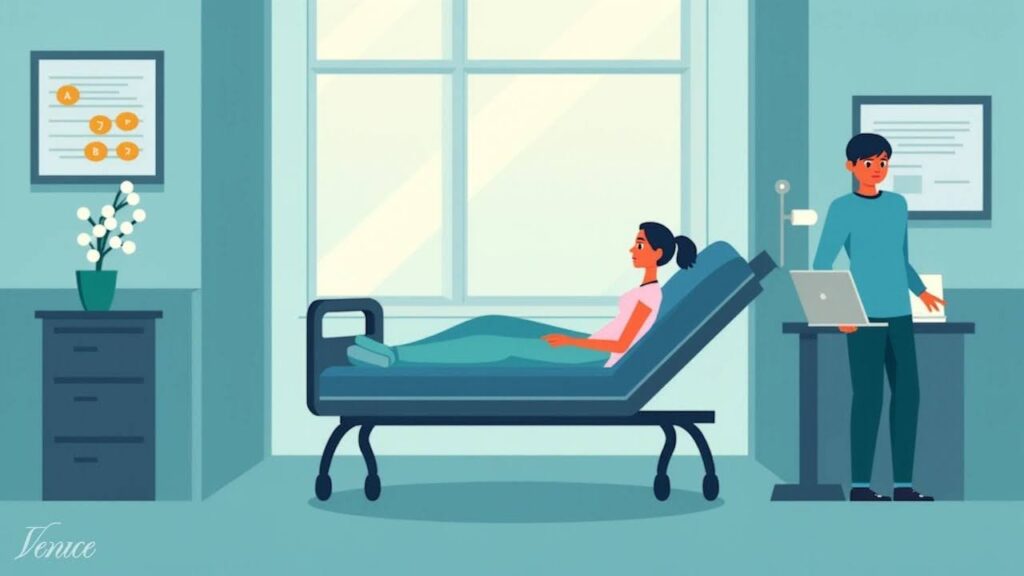Modafinil Addiction: Signs & Symptoms (Provigil)
You want to stay sharp. You want to keep up. Modafinil can feel like a harmless boost until your sleep is wrecked, your mood is off, and you’re chasing pills just to feel normal.
If that sounds close to home, you’re not alone and you’re not broken.
Modafinil, known by the brand name Provigil, is a wakefulness drug that works differently than classic stimulants like Adderall. It raises dopamine more slowly and usually doesn’t cause euphoria, which is why it’s in Schedule IV instead of II. Still, with steady or high-dose use, dependence can creep in quietly. People start for narcolepsy or shift work, or for off‑label “focus,” and end up stuck. We can spot the signs early and talk through what modafinil addiction treatment and modafinil rehab actually look like.
What Modafinil Is and Why People Underestimate It
Modafinil is a eugeroic, a fancy way to say it promotes wakefulness, and it mainly works by blocking dopamine reuptake so dopamine levels rise in a smoother, less spiky way than amphetamines. That gentler rise is why it tends to cause less euphoria and has a lower abuse profile compared with Adderall, as described by RPh Labs.
Doctors prescribe modafinil for narcolepsy, shift work sleep disorder, and as an add‑on for obstructive sleep apnea, and it’s also used off‑label for attention issues, fatigue in MS or depression, and cognitive performance. That off‑label use has driven more interest and non‑medical use.
I get why people see it as “safer Adderall.” The risk is lower, but it’s not zero.
Why (Provigil) Modafinil Misuse Can Slip Into Dependence
National surveys group modafinil with prescription stimulants, and millions report past‑year misuse. The 2023 NSDUH estimate put prescription stimulant misuse around 1.2 million people and about 0.7 percent of the population with non‑medical use, which includes modafinil. In cities with high academic and professional pressure, folks turn to Provigil for an edge. Atlanta is one of those places, and local programs describe rising off‑label use that mirrors national trends, as noted by Thoroughbred Wellness and Recovery.
Here’s the pattern I hear a lot: someone treats Provigil like strong coffee. A few longer days. A test week. Before long, doses creep up, sleep gets weird, and stopping brings a wall of fatigue. That “it’s just like caffeine” mindset is a common trap.
What Signs and Symptoms of Modafinil Addiction to Watch for
If you’re trying to figure out whether it’s time to worry, start with behavior, sleep, mood, and heart rate. The table below pulls together what clinicians commonly see.
| Domain | Common signs | What that can look like day to day |
| Behavioral | Escalating dose without medical guidance, seeking multiple prescriptions, fixating on getting or using more | Running out early, “losing” scripts, spending lots of time figuring out supply instead of work or school |
| Physical | Insomnia, headaches, nausea, faster heart rate and higher blood pressure, weight loss | Lying awake even when dead tired, frequent tension headaches, restless body, clothes fitting looser |
| Psychological | Anxiety, irritability or aggression, depression, brain fog despite earlier “boost,” social withdrawal | Snapping at people, flat mood, struggling to focus on anything without a pill, skipping plans |
These patterns are described in plain terms. No single sign proves addiction, but clusters matter.
I’ll add something personal: when someone says “I use it to feel normal now,” that’s a big flag to me.
How Withdrawal From Modafinil Shows Up
Stopping suddenly can feel like hitting a dimmer switch. About 5 to 10 percent of users report withdrawal symptoms when they quit, a small but very real group. The most common issues are bone‑deep fatigue, low mood, irritable sleep, headaches, and trouble concentrating.
The modafinil withdrawal timeline usually goes like this. In the first day or two, fatigue and irritability hit. Days three to five, mood swings and brain fog peak, and sleep is chaotic. The first week tends to ease a bit, and most symptoms quiet down by the second week, although some folks report lingering low motivation.
Good news: withdrawal is generally not medically dangerous. Less good: it can clobber your functioning. That’s why supervised support really helps.
How Modafinil Addiction Treatment Works
You don’t need to white‑knuckle it. Most clinicians prefer a gradual taper rather than quitting cold turkey. A controlled dose reduction smooths the crash, and in some cases short‑term medications can help steady things. Modafinil addiction treatment programs often use atomoxetine or bupropion to reduce withdrawal symptoms and cravings. For people taking high doses, a supervised modafinil taper can be part of the plan, which is supported by a published case report on dependence in PMC.
Supportive care matters more than it sounds. Hydration, regular meals, light movement, and strict sleep habits can shorten the worst days. I know that sounds basic. It works when you actually do it.
On the therapy side, cognitive behavioral therapy is the backbone because it looks straight at triggers and builds practical tools, and programs also use DBT skills, motivational interviewing, and trauma‑focused care when needed. That combination is a standard offering at centers like Thoroughbred Wellness and Recovery, which explicitly blend individual, group, and family work.

Who Benefits From Modafinil Addiction Rehab and When
If you can’t cut back, you’re stuck on a seesaw of use and crash, or you’ve got anxiety or depression riding shotgun, you’ll likely do better with a formal program. Facilities that offer multiple levels of care can match the intensity to your needs. Partial hospitalization, intensive outpatient, outpatient step‑downs, and residential tracks are common options listed by Thoroughbred Wellness and Recovery. That range makes modafinil rehab more doable for students and professionals who can’t pause life entirely.
Lots of folks with Provigil problems have co‑occurring conditions like ADHD, mood disorders, or trauma. Treating both at the same time is the key. Integrated dual diagnosis care isn’t a bonus, it’s the plan, as emphasized in the dual diagnosis program description from Thoroughbred Wellness and Recovery. I’ve seen people try to fix the drug issue without touching panic or insomnia. It rarely sticks.
One note for families: your support really changes outcomes. Family sessions that reset boundaries and teach communication become a safety net, and centers like Thoroughbred Wellness and Recovery include that work from the start.
How Modafinil Addiction Treatment Compares with Adderall Cases
People often ask if Modafinil addiction is “as bad as” Adderall. Different profiles. Adderall misuse rates are higher and withdrawal tends to hit harder, which is consistent with national summaries like the National Depression Hotline’s overview of Adderall addiction rates. Modafinil dependence exists, and withdrawal affects a smaller slice of users at around 5 to 10 percent.
In terms of recovery, Atlanta programs that combine medical care, therapy, and aftercare see sustained recovery for roughly 45 to 70 percent of clients who complete treatment. Relapse happens, often in the 40 to 60 percent range, which looks a lot like other chronic health conditions. That’s why continuing support really isn’t optional. It’s the long game.
I think this is actually reassuring. We know what works. We just have to keep doing it longer than feels comfortable.
Why Atlanta’s Modafinil Addiction Rehab Ecosystem Helps
Atlanta has an unusually active harm reduction and recovery network. Community groups push for Narcan access, testing supplies, and support circles, all of which make recovery safer and more accessible.
Treatment centers often plug directly into that web. Programs like Thoroughbred Wellness and Recovery connect clients with peer coaches and community supports during and after care, which keeps momentum going when the structured schedule lightens up. That handoff might be the most underrated part of recovery, honestly.
Why This Matters for You
If Provigil has crept from helpful to necessary, you’re not imagining it. Modafinil can hook into daily routines in quiet ways. The flip side is bright though. With a slow taper, short‑term meds when needed, and therapy that fits your life, you can get your energy, sleep, and attention back without living on a pill. If you’re in Georgia or nearby and want a plan that balances medical care with real‑life constraints, look into modafinil addiction treatment or provigil addiction treatment that offers flexible levels of care and true dual diagnosis support. Programs like Thoroughbred Wellness and Recovery in Atlanta build those pieces in from day one.
If you’re ready to talk, reach out to a trusted provider in your area, or contact an Atlanta program now to ask about modafinil rehab or provigil rehab options that fit your schedule. Don’t wait for a perfect moment. Send the email, make the call, tell someone you trust today.
Discover the Right Rehab Center In Marietta, Georgia
You don’t have to do this alone. At Thoroughbred Wellness and Recovery, real people show up for you with care that fits your life. Our team blends evidence-based therapies with holistic approaches, like EMDR Therapy, CBT, DBT, equine therapy, psychodrama therapy, Accelerated Resolution Therapy, and Rapid Resolution Therapy, so you can heal mind, body, and spirit. With PHP, IOP, Evening IOP, and Outpatient options, we’ll meet you where you are and build a plan that works for your schedule, whether you’re balancing work, family, or both.
If you’re ready to take the next step, we’re here to make it simple. Stop by or send us a note: 1501 Johnson Ferry Rd Suite 225, Marietta, GA 30062. Call 770-564-4856, email info@thoroughbredbhc.com, or reach out through our contact page. We offer a quick 15–20 minute phone assessment, verify insurance within 24 hours, and accept major plans including Blue Cross Blue Shield, Aetna, Cigna, UnitedHealthcare, and Humana. Your path forward can start today.



